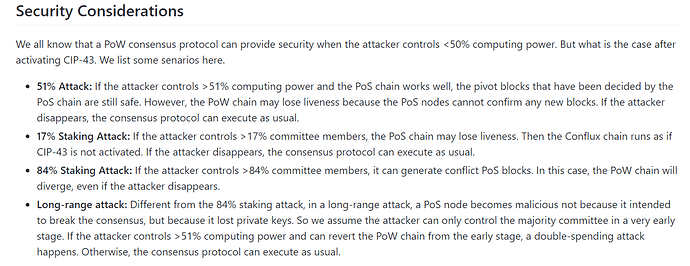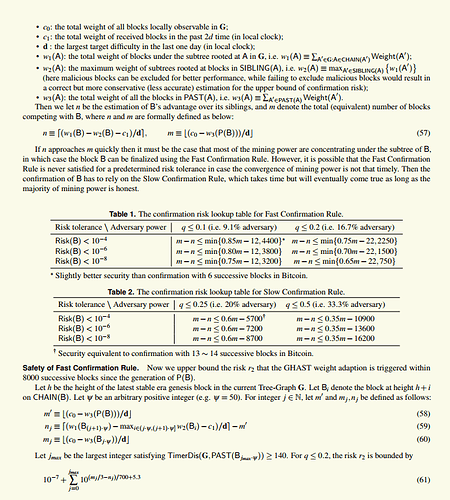First of all, thanks to the Conflux community for noticing the CIP-43 proposal. I found that all the relevant discussions were expecting an official explanation. As an author of CIP-43, I am going to explain this proposal. In this post, I will only summarize the job of CIP-43. As for the reason why PoS finality is introduced, you can refer to it here.
1. What is CIP-43 doing?
CIP-43 introduces a PoS chain as the witness chain to prevent 51% attacks.
2. Will Conflux become a PoS chain after CIP-43?
In CIP-43, PoS requires the consensus from at least 67% of the PoS participants to interfere with the PoW chain’s behavior. Also need to mention that according to the protocol, PoS nodes should only sign blocks that have been confirmed by the PoW consensus.
This means that unless more than 67% of staking voters unite to attack the network, Conflux acts no differently than running with only the PoW chain if there are no PoW attacks. Transaction packaging, transaction executing, and block sorting are still done by the miners.
If users believe that at least 34% of the PoS nodes are honest, then they only need to consider the PoW rules.
3. Conflux does not recognize PoS, so why did it choose to introduce it?
In a PoS chain, a group with more than 34% of the Stake can prevent any transaction from being recorded to the chain and thus stop the chain. A group with more than 67% of the Stake can take full control of the chain and launch a double-spend attack at will. In Long Range Attacks, the attacker can rewrite the whole history by buying the private keys of the investors who made a sell-off.
Then what does CIP-43 look like? Without a 51% attack, 34% of the Stake can’t do anything, and 67% of the Stake still can’t do anything either. (34% of the Stake can stop the PoS chain, but the PoW chain can still run as usual, just like how it behaves without CIP-43). It takes at least 67% of the Stake (>2/3) to have a tangible impact on the PoW chain, and the Long Range Attacks of PoS have almost no effects here as well.
Overall, the dependency of CIP-43 on Staking nodes is completely different from that of a pure PoS chain. I have actually highlighted this point in the CIP-43 proposal as well.
4. Does PoS increase the complexity of transaction confirmation?
Firstly, due to the special nature of the Conflux consensus, the transaction confirmation cannot be achieved by simply counting the number of confirmed blocks. If you know anything about GHOST, the GHOST protocol requires comparing the size of each level of subtrees and sibling subtrees. Conflux’s GHAST protocol is even more complex. I have listed the Conflux transaction confirmation rules below. The process in which you saw the flashing of the “security level” icon on ConfluxScan is in fact supported by these mathematical formulas in behind.
Compared with these formulas, it is not very expensive to take an extra look at the state of the PoS chain.
My response above is entirely based on the summary of the CIP-43 proposal and the Spec document. If you are interested, you can have a look at CIP-43 and Spec in detail.
.



